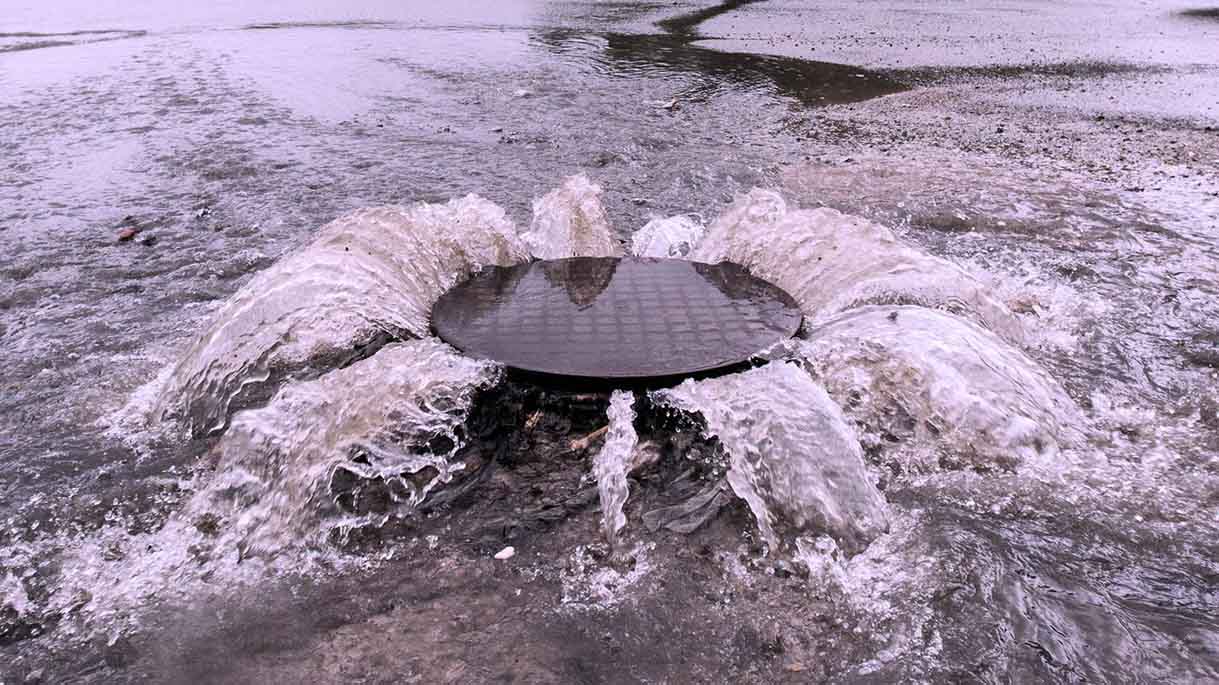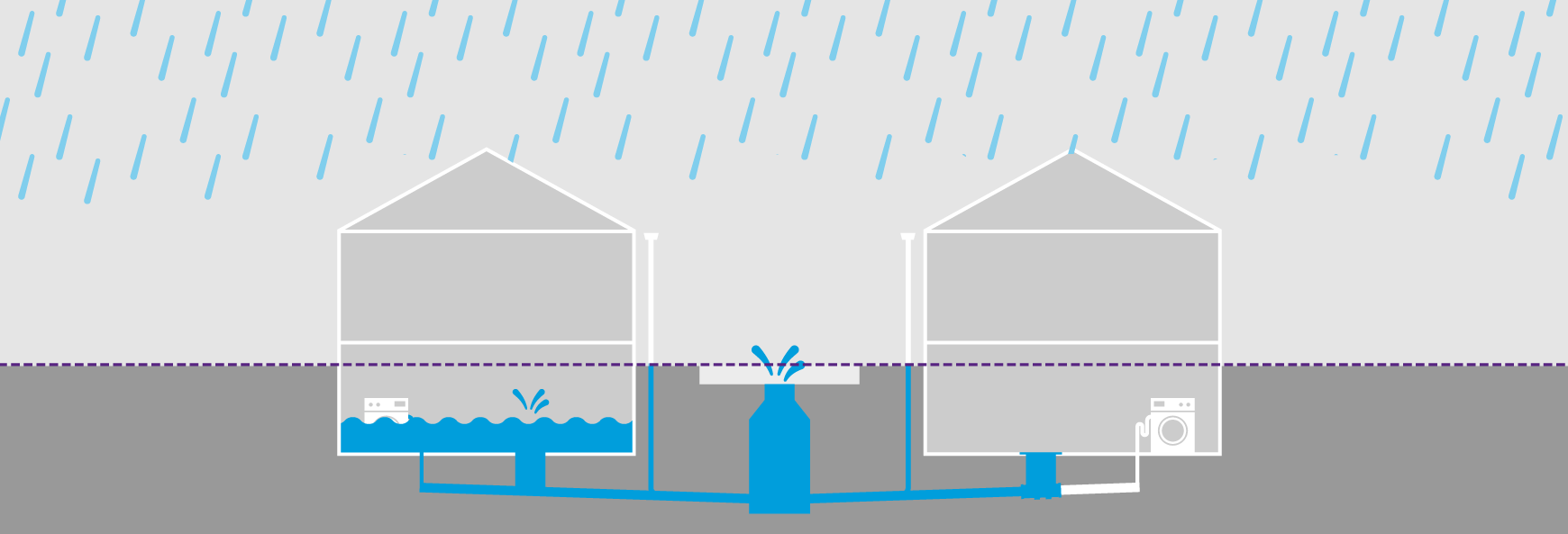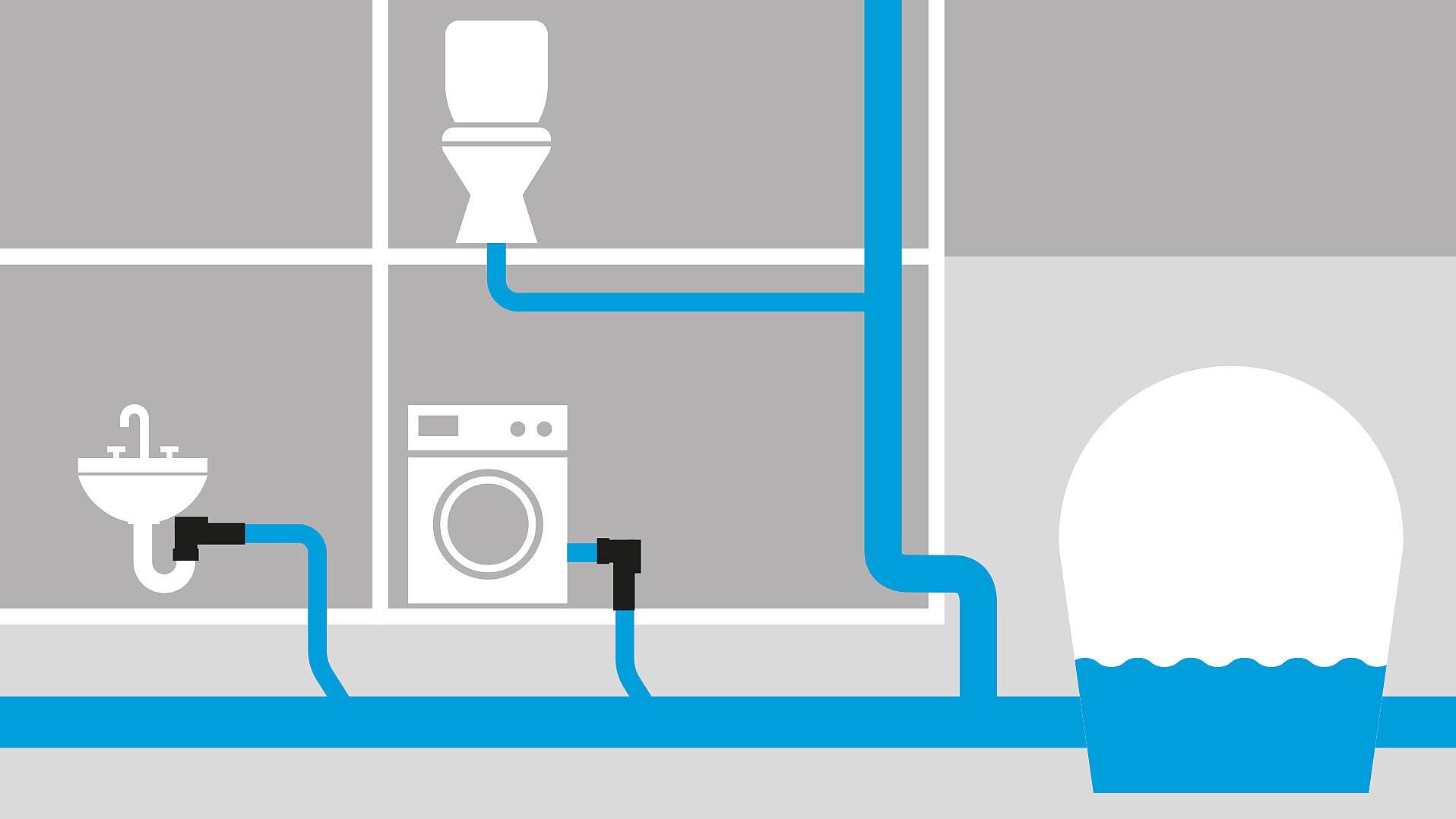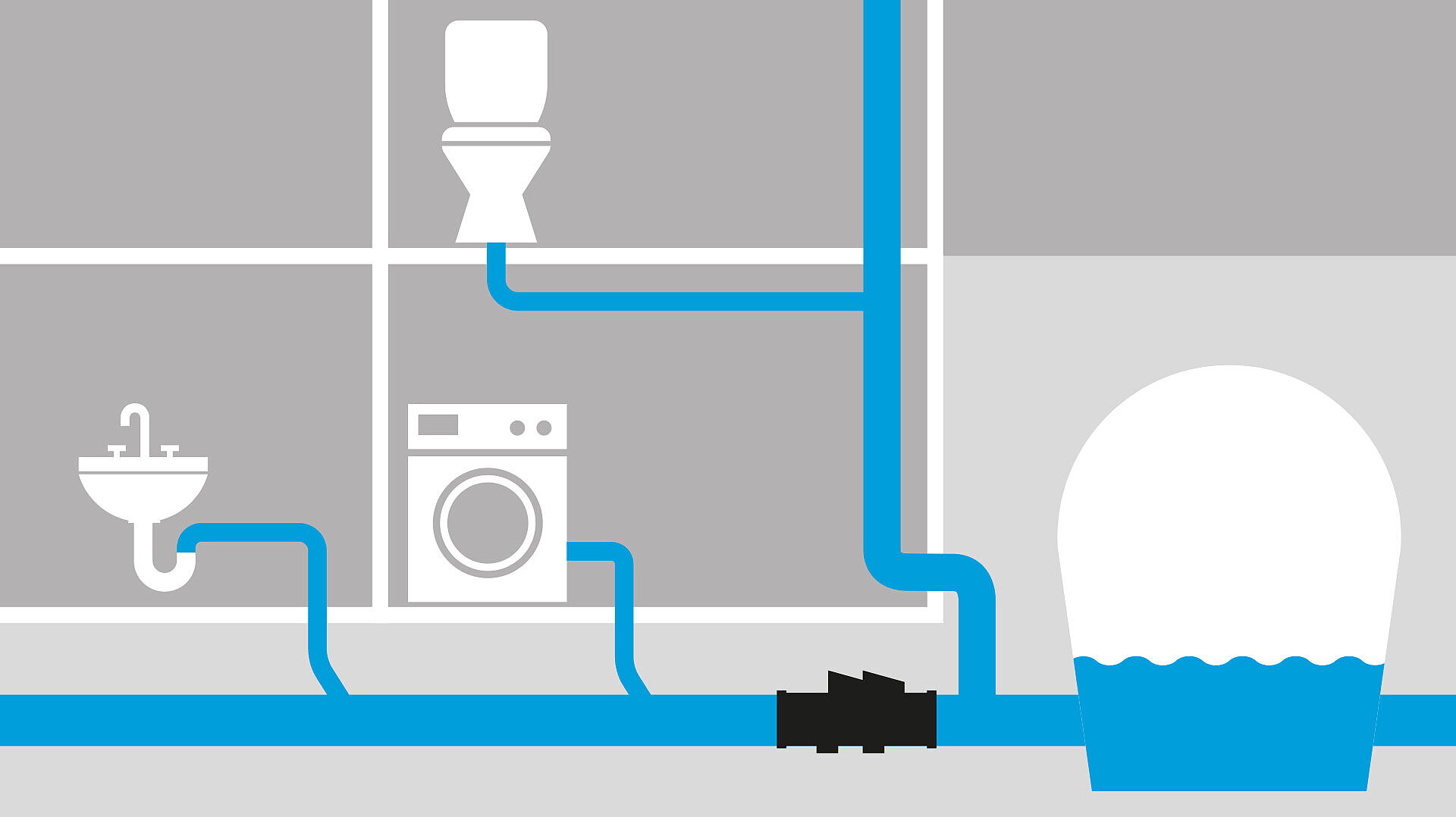
What is backwater?
The term "backwater" describes a phenomenon that occurs when more water is temporarily discharged into the sewer system than it can “handle”. This can happen, for example, during heavy rain or flooding (sewer blockage). The sewage level then rises within the sewer system and inexorably escapes wherever it can – i.e. from manhole covers and, in the worst-case scenario, the drains, washbasins and toilet in your basement.
Drainage system without backwater protection:
During heavy rain, the water level rises above the so-called backwater level. This term is typically used to mean street level. Rooms in the basement or cellar quickly become flooded. This results in significant damage and costs.
Drainage system with backwater protection:
Wastewater that flows with a slope to the sewer will be protected by a backwater valve. In the event of backwater, the flap closes so that no wastewater can enter the building.If the public sewer is higher than the drainage point in the building, the wastewater must be pumped above the backwater level via a lifting station.
1. What type of wastewater is to be disposed of?
Irrespective of whether you are dealing with the disposal of wastewater with or without sewage, this can have an impact onthe functionality and operational safety of backwater valves. Before you decide on a product, you need to ask yourself the following question: For which sanitary appliances should theproduct provide drainage? The decisive factor is always the type of wastewater that drains into the sewer via the backwater valve in the direction of flow.
2. Where is the installation site?
The renovation of an old building, stylishly integrated in the new building, directly installed in the building or outside in a building connection chamber: Backwater valves can be installed in different locations depending on the individual situation on site. Simply select the most appropriate solution for you from the different versions.
Slope to the sewer
If the sewer lies below the backwater protection, the domestic wastewater will be disposed of via the natural slope. Backwater valves and hybrid lifting stations can be used here.
No slope to the sewer
If the sewer is higher than the backwater protection, the wastewater is usually lifted via a backwater loop to the sewer by a lifting station.
![[Translate to Englisch:] Funktionsgrafik Rückstaupumpanlage Pumpfix F [Translate to Englisch:] Funktionsgrafik Rückstaupumpanlage Pumpfix F](/fileadmin/_processed_/4/a/csm_kes_grafik_pumpfix_funktion_2_RGB_16-9_ee6e70755e.jpg)
Protects in the event of backwater
The backwater flap prevents wastewater from the sewer entering the building.
![[Translate to Englisch:] Funktionsgrafik Rückstaupumpanlage Pumpfix F: Pumpt gegen den Rückstau [Translate to Englisch:] Funktionsgrafik Rückstaupumpanlage Pumpfix F: Pumpt gegen den Rückstau](/fileadmin/_processed_/3/8/csm_kes_grafik_pumpfix_funktion_3_RGB_EN_fcf74db238.jpg)
Disposes in the event of backwater
Despite backwater from the sewer and a closed flap, domestic wastewater can be disposed of via a pump. This ensures that the drainage system would remain functionally capable.




